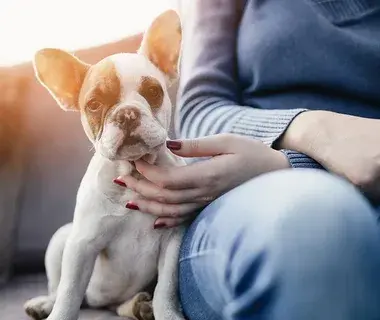Is Grooming Behavior Learned in Animals?
A Complete Guide by Animals Pet Health
Understanding how and why animals groom themselves is essential for pet owners who want to support healthier, happier pets. Many pet parents wonder: is grooming behavior learned in animals, or is it entirely instinctual? While grooming is deeply rooted in natural instincts, learned behavior also plays a significant role—especially through early-life experiences, social interactions, and guidance from an animal behavior trainer.
In this blog, Animals Pet Health explains the science behind animal grooming, how pets learn these behaviors, and why grooming is a crucial part of their physical and emotional well-being.
H2: What Is Grooming Behavior in Animals?
Grooming refers to the actions animals take to clean, maintain, or care for their fur, skin, feathers, or bodies. It varies between species but usually includes:
- Licking fur or feathers
- Cleaning paws
- Removing debris or parasites
- Preening (in birds)
- Dust bathing or water bathing
- Social grooming within groups
Grooming is not only about cleanliness; it also helps regulate body temperature, strengthen social bonds, and reduce stress.
H2: Instinctual Grooming Behaviors
H3: Built-In Survival Mechanisms
Many grooming behaviors are instinctual, meaning animals are born knowing how to do them. For example:
- Cats immediately start licking themselves as kittens.
- Birds naturally preen their feathers to maintain flight readiness.
- Rodents groom to keep their fur functional for insulation.
These natural instincts help animals survive, remain healthy, and avoid parasites.
H3: Mother-Initiated Grooming
In the early stages of life, grooming is heavily influenced by the mother. She:
- Cleans her newborns
- Stimulates circulation
- Teaches them how grooming feels and why it’s necessary
Young animals often mimic these behaviors, reinforcing the instinctual actions they already possess.
H2: Is Grooming Behavior Learned in Animals?
While grooming starts as an instinct, animals do learn grooming techniques through observation and experience. The answer is a combination: grooming is both instinctual and learned.
H3: Learning Through Social Observation
Animals raised in social groups—dogs, primates, horses, birds—often learn new grooming practices by watching others. For example:
- Puppies imitate their mother or littermates.
- Birds learn specific preening habits by observing flock members.
- Primates learn grooming rituals as part of social bonding.
These behaviors strengthen group relationships and teach young animals the proper frequency and style of grooming.
H3: Influence of Environment
Animals adapt their grooming behavior based on their surroundings. A pet living in a dusty or humid environment may groom more often than one in a cleaner climate. This adaptation is learned through experience.
H3: Role of Human Guidance
Pet owners and professionals, such as an animal behavior trainer, help shape grooming habits. Through positive reinforcement, animals learn:
- Accepting brushing or combing
- Standing still during baths
- Tolerating nail trimming
- Managing anxiety around grooming tools
This learned behavior allows for healthier hygiene and a safer grooming process.
H2: Why Grooming Matters for Pet Health
Grooming is essential for physical and emotional well-being. At Animals Pet Health, we emphasize grooming for the following reasons:
H3: Physical Benefits
- Controls shedding
- Prevents matting
- Reduces risk of skin infections
- Removes parasites
- Promotes healthy fur and skin
H3: Emotional Benefits
- Lowers stress and anxiety
- Strengthens trust between owner and pet
- Promotes a sense of routine and stability
H3: Supports Behavior Training
Grooming teaches patience, body awareness, and handling tolerance—skills important for overall good behavior.
H2: How an Animal Behavior Trainer Helps Grooming Development
An animal behavior trainer plays a vital role in teaching pets how to accept and enjoy grooming sessions. Their training methods may include:
- Desensitization to grooming tools
- Introduction to positive reinforcement
- Training for calm posture during grooming
- Redirecting negative grooming behaviors
- Teaching owners how to safely groom their pets
Through consistent guidance, a trainer can correct unhealthy grooming habits such as over-licking, excessive scratching, or aggression during grooming.
H2: Common Grooming Issues and How Pets Learn to Manage Them
H3: Over-Grooming
Pets may over-groom due to stress, allergies, or boredom. Learned behavior modification can help redirect this habit.
H3: Grooming Anxiety
Animals fearful of grooming tools can be trained using gradual exposure and reward-based training.
H3: Lack of Grooming in Certain Breeds
Some breeds require more grooming assistance because their instincts are less strong than others. With proper training, even these pets can develop better grooming habits.
H2: Tips for Helping Your Pet Learn Healthy Grooming Habits
- Start grooming early in life
- Use gentle tools suitable for your pet’s coat or feathers
- Keep grooming sessions short and positive
- Reward calm behavior
- Seek help from an animal behavior trainer if needed
- Practice regularly to build comfort and trust
FAQ: Is Grooming Behavior Learned in Animals?
Q1: Is grooming instinctual or learned?
Both. Grooming starts as an instinct but develops further through learning and social experience.
Q2: Can an animal behavior trainer improve grooming habits?
Yes, a trainer can teach pets to stay calm during grooming and adjust unhealthy grooming behaviors.
Q3: Why does my pet avoid grooming?
Your pet may be nervous, unfamiliar with tools, or experiencing discomfort. Training and positive reinforcement can help.
Q4: Do all pets groom themselves naturally?
Most do, but some breeds or individual animals need assistance due to coat type, health issues, or anxiety.
Q5: How can I encourage healthy grooming at home?
Create a calm environment, use the right tools, reward good behavior, and practice consistently.
Grooming is both an instinctual and learned behavior in animals, shaped by nature, early-life experiences, and social interactions. While pets are born with the basic instinct to clean and care for themselves, they refine and improve these skills through observation, environment, and support from their owners. With the guidance of an animal behavior trainer, pets can develop healthier grooming habits, reduce anxiety, and build stronger trust with their families.
While grooming starts as an instinct, animals do learn grooming techniques through observation and experience. The answer is a combination: grooming is both instinctual and learned.
At Animals Pet Health, we believe that understanding grooming behavior helps pet owners create a cleaner, calmer, and more comfortable life for their animals. By encouraging positive grooming routines early and consistently, you support your pet’s long-term physical health and emotional well-being.





